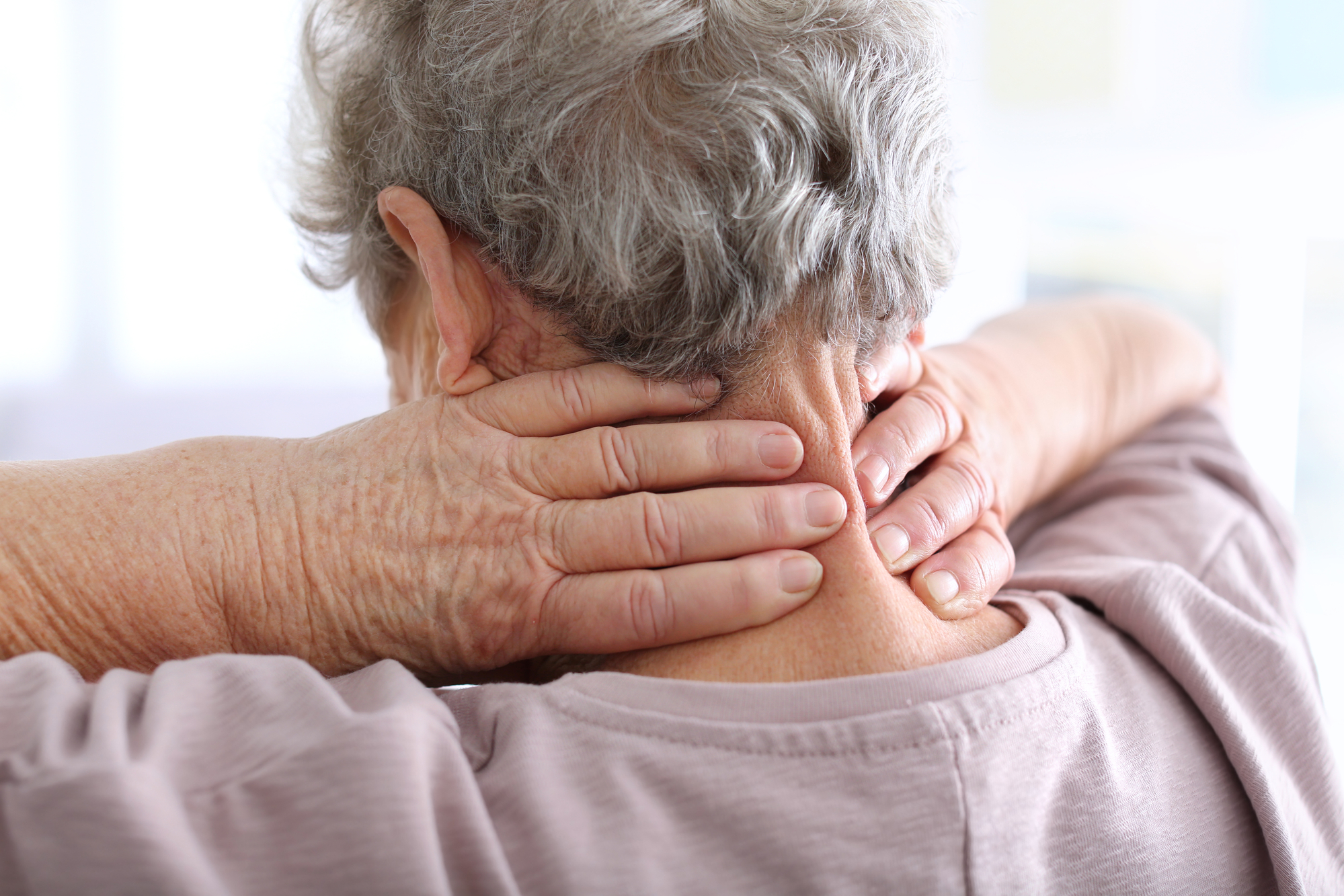The cervical spine is the vertebrae, or bones, that make up your neck. These vertebrae protect the area of the spinal canal that runs through them and carries the spinal cord. The nerves in the spinal canal allow us to feel, move, and control the bowel, bladder, and other important body functions.
Cervical stenosis occurs when the spinal canal narrows and compresses these nerve roots. It can even cause damage to the spinal cord. Cervical stenosis doesn’t always have symptoms or exhibit pain, but it can bring about cervical radiculopathies (Nerve Root Compression Syndrome) which manifest in the form of shoulder, arm, and/or neck pain.

What are the symptoms?
Many people over the age of 50 have narrowing of their spinal canal but don’t show symptoms. Symptoms only appear when the spinal cord or nerves around it are compressed and they usually develop gradually over a long period of time.
Symptoms of cervical stenosis may include:
- Stiffness, numbness, weakness, or pain in the shoulders, arms, hands, legs, or neck
- Balance problems, like tripping while walking
- Incontinence
What causes cervical stenosis?
Cervical stenosis is generally caused by age-related changes and is more common in people over the age of 50. The aging process often causes the ligaments in the spine to thicken, destruction of cartilage, and excessive growth in joint bones. All of these can cause the spinal canal to narrow and compress the spinal cord and nerves.
In rare cases, cervical stenosis can occur from the way that the bones formed during birth. Other causes include spinal injuries, herniated discs, and tumors.
How is this diagnosed and treated?
Oftentimes, symptoms of cervical stenosis and radiculopathies will spontaneously resolve on their own within a few days or weeks. In mild cases, pain-relieving medication and physical therapy can help control the symptoms.
If the pain or other symptoms persist for longer than a month or two or the pain becomes incapacitating, then you should get further evaluation. That may consist of an MRI scan or myelogram followed by a CT scan.
Depending on what is discovered during this evaluation, surgery may be necessary. This is generally the case when the spinal cord or nerves are being tightly squeezed and the surgery can help relieve that pressure. This procedure can be performed with a small incision and microsurgical techniques, allowing the patient to return to restricted activities within a few days or weeks and normal activities within two to three months.
If you have been experiencing any severe symptoms of cervical stenosis or have concerns that this may be what is causing your pain, call our office today for a consultation with Dr. Dickinson.